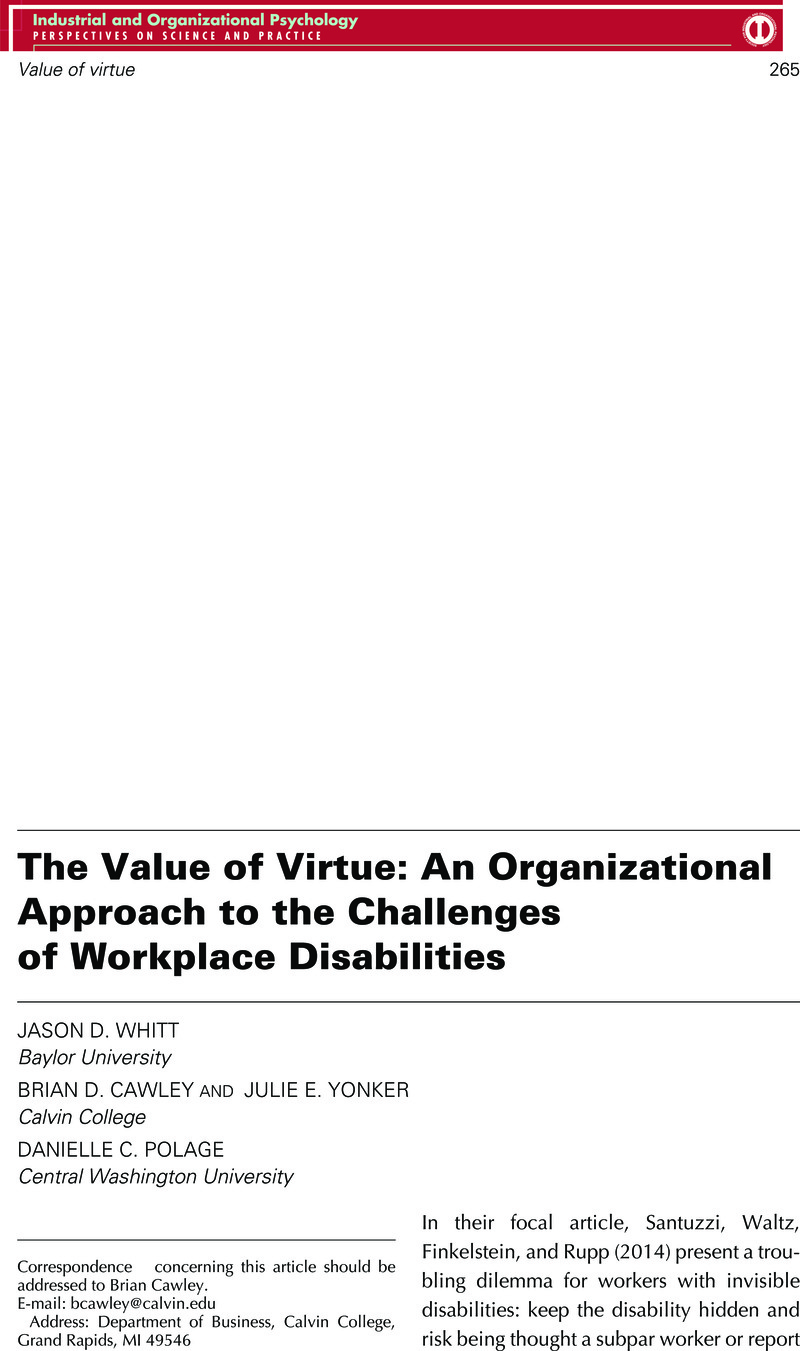Crossref Citations
This article has been cited by the following publications. This list is generated based on data provided by Crossref.
Gotsis, George
and
Grimani, Katerina
2015.
Virtue theory and organizational behavior: an integrative framework.
Journal of Management Development,
Vol. 34,
Issue. 10,
p.
1288.
Norstedt, Maria
2019.
Work and Invisible Disabilities: Practices, Experiences and Understandings of (Non)Disclosure.
Scandinavian Journal of Disability Research,
Vol. 21,
Issue. 1,
p.
14.
Santuzzi, Alecia M.
Keating, Robert T.
Martinez, Jesus J.
Finkelstein, Lisa M.
Rupp, Deborah E.
and
Strah, Nicole
2019.
Identity Management Strategies for Workers with Concealable Disabilities: Antecedents and Consequences.
Journal of Social Issues,
Vol. 75,
Issue. 3,
p.
847.



